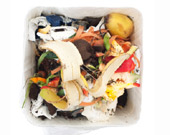
Characteristics
- Food is placed in the mouth where it is tasted, chewed, and then spit out.
- The person avoids consuming the food item, and thus any “perceived” guilt for having ingested an item they may have labeled as a “bad” food.
Diagnosis
It is important to realize that CHSP is not a separate eating disorder, but is still a significant and potentially dangerous practice. It is a behavior that can be manifested by persons with anorexia, bulimia, OSFED (formerly EDNOS), binge eating disorder and/or any other type of disordered eating.
Rumination disorder, however, is a recognized eating disorder in the DSM-V (Diagnostic and Statistical Manual of Mental Disorders). More common in children, food is regurgitated then either spit out, re-chewed and/or swallowed. Diagnosis is made when regurgitation of food is repeated for at least a month. Although they may sound similar, those who practice chewing and spitting choose foods with a taste that they enjoy, usually high in sugar, salt and/or fat.
Function
- CHSP may serve different purposes for each individual.
- Some persons report they practice CHSP throughout the day and lose awareness of their own true hunger and need for food.
Risks
- Most report the practice of CHSP becomes “addictive” and difficult to cease.
- Because the individual avoids consuming the food through normal means of digestion he/she risks suffering from improper nutrition.
- CHSP can lead to ulcers because when food is in the mouth it triggers an acid release in the stomach, which can attack stomach lining when food is not present for digestion.
- Excessive chewing can lead to dental cavities and decay, as well as swollen salivary glands.
- CHSP behavior can be as physically, emotionally and physiologically negative as severe food restriction and/or binge eating.
- Even though the food is being spit out, it is often possible that the person does not lose weight, because a) some of the calories still make it into one’s system, b) those engaged in such behaviors may be prone to erratic eating in addition to CHSP, and/or c) the body reacts in unpredictable ways to the behavior, including releasing insulin into the body, triggered by food’s presence in the mouth.
What Do I Do Now?
First, it’s important to stop for a moment and consider what is leading you to this behavior. Eating issues are just symptoms of deeper problems, such as fear, anxiety, loneliness or depression. Getting to the root of what drives your food issues can be a hard yet rewarding experience.
As with all types of disordered eating, we strongly recommend that you seek out counsel from a therapist, doctor, or nutritionist. As noted above, even though CHSP may not seem as extreme as some other types of disordered eating, it can have very harmful effects on your physical, intellectual, emotional, relational and even spiritual health. It can lead to or be part of a serious eating disorder. For more information on how to find the help you need, search our video library and read our article “Finding Treatment.”
- Seek community and support.
- Consider taking one of our Lasting Freedom self-study courses (not a replacement for one-on-one care with a professional).

